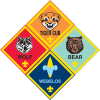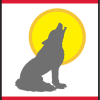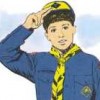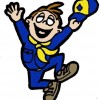Belt Loop
Complete these three requirements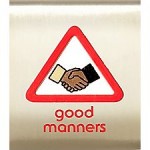
- Make a poster that lists five good manners that you want to practice. Share your poster with your den or family.
- Introduce two people correctly and politely. Be sure that one of them is an adult.
- Write a thank-you note to someone who has given you something or done something nice for you.
Academics Pin
Earn the Good Manners belt loop and complete five of the following requirements.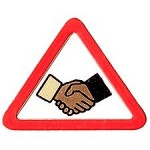
- Meet one new person, shake hands properly, and introduce yourself. Extend your hand, grip the person’s hand firmly, and gently shake hands.
- Talk with your family about polite language. Include “please,” “you’re welcome,” “excuse me,” “yes, sir,” “no, ma’am,” and so on in your talk.
- Explain to your den or family how good manners can help you now and as you get older. Copy the actions of someone you know who has good manners.
- Go over table manners with your family. Eat a meal together where the table is set correctly and everyone uses good table manners.
- With an adult, discuss what foods are proper to eat with your fingers. Practice eating some of these foods the right way.
- In your den or with your family, practice using good phone manners.
- Explain how treating things that belong to other people with respect is a part of having good manners. Show three examples of how you can show respect for others.
- Talk with your friends or family members
about following the rules and having good sportsmanship when playing games. Then play a game with your friends or family members. After playing the game, tell how you showed good manners. - With your family or den, list five rules to
remember in being polite and respectful when in a public place. Go to the public place and practice the rules. Explain how the rules helped you to have good manners. - Demonstrate the proper outfit to wear at school, at play, and at a social event.
Additional Information
Good Manners Means . . .
- Speaking politely
- Using good telephone etiquette
- Not interrupting others when they are speaking
- Giving polite introductions
- Eating properly
- Respecting others’ things
- Respecting others’ privacy
- Saying “please” and “thank you”
- Writing thank-you notes
Manners for Cub Scouts
- Wait your turn in line.
- Do not call people names that are unkind or rude.
- Always greet people politely.
- Clean up after yourself, whether you are at home or somewhere else.
- Practice good sportsmanship and play fair.
- Take compliments courteously.
- When entering or exiting doors, elevators, buildings, or rooms, allow others to enter or exit before you do so. Hold the door or elevator open for others.
- Be respectful to others by using polite language.
Basic Table Manners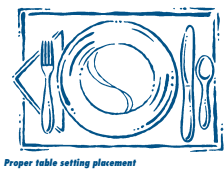
- Use a utensil unless the food is meant to be eaten with fingers.
- Always say thank you when served something.
- Wait until everyone is served before eating.
- Eat slowly. Don’t stuff your mouth full of food.
- Chew with your mouth closed, and don’t speak while you have food in your mouth.
- When eating a roll, break off a piece of bread before buttering.
- Ask for an item to be passed to you; never reach over someone’s plate for something.
- Always place your napkin on your lap, and use it to dab your mouth clean.
- Do not pick anything out of your teeth.
Resources
Emily Post’s the Guide to Good Manners for Kids by Peggy Post and Cindy Post Senning. HarperCollins, 2004.
Manners Can Be Fun by Munro Leaf. Universe Publishing, 2004.
My Manners Matter: A First Look at Being Polite by Pat Thomas. Barron’s Educational Series, 2006.
Social Smarts: Manners for Today’s Kids by Elizabeth James and Carol Barkin. Sandpiper, 1996.
What Do You Know About Manners? by Cynthia MacGregor. Meadowbrook, 2000.
Manners for Kids and Parents
Web site: http://life.familyeducation.com/mannersand-values/parenting/34452.html

